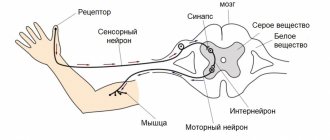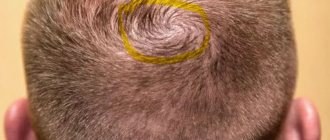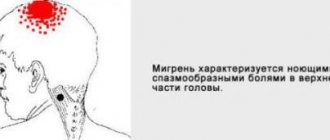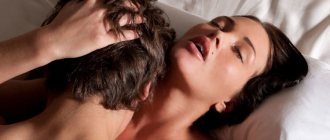Description of the phenomenon
Goosebumps appear when nerve endings in the spinal cord or brain are irritated. The reason is the stimulation of individual nerves, which has such an effect on their endings. The irritation causes muscle contraction, causing a sensation as if the hair on the head has risen, and tiny bugs have begun to run across the skin itself. This phenomenon can affect not only the head, but also any other part of the body where there is at least a little hair.
Goosebumps can be one-time (temporary). In this case, they appear for completely natural reasons in a healthy person. Sometimes they can be combined with seizures, loss of sensation, dizziness, but no medical intervention or medication is required. Goosebumps appear for the following reasons:
- Emotional arousal (joy, surprise, fear);
- Touching sensitive skin;
- Low air temperature, hypothermia;
- High body temperature;
- Poor health (weakness, fatigue, headache).
When such sensations appear under the conditions listed above, there is no need to worry. After some time, the goosebumps will disappear on their own, and not a trace will remain of the unpleasant feelings.
Sometimes goosebumps may appear during sexual arousal. Humans experience this much less frequently than most living beings.
The mechanism of sensation
The appearance of a crawling sensation on the scalp is observed if the conduction of impulses along the nerves is disrupted. This happens when nerve endings are irritated. If the small subcutaneous muscles that attach to the hair follicles contract, the person feels like goosebumps are running over the head. This unpleasant condition is called paresthesia. The condition occurs with goose bumps.
The appearance of goosebumps on the back of the head or in other parts of the head can be caused by various sensations:
- satisfaction;
- fear;
- excitement;
- admiration;
- delight;
- pleasure.
The appearance of paresthesia is observed when exposed to environmental factors or when certain diseases occur.
Causes associated with pathologies
Goose bumps on the head can be chronic. They are caused by the development of various diseases and are almost always combined with other more serious symptoms. The frequency and regularity of manifestations depend on what particular pathology caused them. In the most dangerous diseases, convulsions, tingling and numbness of the skin appear in damaged areas, sensitivity is lost, temperature is disturbed, and hair falls out.
What diseases can cause goosebumps:
- Osteochondrosis of the cervical spine. Curvature, combined with constant compression of nerve endings, is one of the most common causes of goosebumps. The patient may also feel slight numbness, dizziness, pain in the neck, head and torso, and tingling. If left untreated, symptoms will accompany the person throughout his life.
- Cardiovascular diseases. Most diseases associated with the heart or blood vessels cause many unpleasant symptoms. Patients may have a numb head, they often feel crawling, pain inside the skull, weakness, nausea, their skin becomes paler, their mood and general well-being worsen. Sometimes symptoms can affect the head only on one side, and also “give” to certain parts of the face and arms.
- Micro stroke. If a micro-stroke occurs, the patient’s brain cell nutrition will be disrupted. In this case, the serious symptoms inherent in a regular stroke will be absent. Everything is limited to goosebumps that appear for a short time, painful sensations inside the head, weakness, and dizziness. A microstroke is also called a transient ischemic attack.
- Hypoparathyroidism. The disease is combined with functional disorders of the parathyroid glands, which cause goose bumps on the scalp, very strong nervous excitability, and numbness in the limbs. If left untreated, complications may develop that cause increased symptoms.
- Atherosclerosis. Vascular damage that occurs with this disease can cause chronic goosebumps, pale skin, memory loss, and the formation of small ulcers. There are frequent cases of complications of the disease in the form of acute vascular insufficiency of the brain, which can lead to death.
- Cervical plexus neuropathy. A pinched nerve often occurs against the background of severe curvature of the spine, but this is not a prerequisite for such a phenomenon. If this happens, the person will feel like there are goosebumps running all over the head, and there will also be severe pain radiating to the back of the head, neck, shoulders and the bone behind the ear.
- Neuropathy of the greater occipital nerve. With this disease, damage occurs to the nerve in the back of the head. The patient's skin will become numb and the sensitivity at the back of the head will decrease. Sometimes he may feel tingling in certain areas of the skull.
- Bell's palsy. This name refers to inflammation of the facial nerve, in which goose bumps begin to run on one side of the face, affecting the upper part of the head. Along with this sensation, weakening of the muscles in certain parts of the face may occur. In some cases, the muscles stop working completely, which requires serious medical supervision.
- Avitaminosis. A lack of vitamins leads to a deterioration in the health of the skin, due to which it begins to peel, crack, and a person experiences a burning sensation, itching, is faced with decreased immunity, pain in the back and head, weakness throughout the body, and bad mood.
- Hypoxic conditions. Lack of oxygen occurs when you spend a long time in a stuffy room, as well as when there are disorders in the brain. In both cases, the person will have a crawling sensation in the head, as well as severe pain affecting one temple, the back of the head, the forehead, or one side of the brain. Often the cause of mild hypoxia is vegetative-vascular disorders, as well as a sympatho-adrenaline crisis against the background of VSD, which causes vasoconstriction, causing a full range of unpleasant symptoms.
- Nervous and mental disorders. With various deviations in a person’s mental state, sensations may appear as if bugs began to crawl on the head, dizziness, weakness, headaches, and discomfort in the stomach. Also, as a rule, there are also psychological symptoms, expressed by increased nervousness, moral instability, bad mood, lack of interest in life, and excessive aggression towards others. All this can appear even with regular overwork or stress.
- Cold. ARVI, acute respiratory infections or influenza are always combined with weakness, runny nose, nasal congestion, sore throat, cough, and high body temperature. Some people experience crawling sensations all over their head. Sometimes complications develop, for example, sinusitis. It causes the same goosebumps, as well as severe pain in the forehead, bridge of the nose and temples, which intensifies when turning the head. A person in this condition should definitely call an ambulance.
- Climax. During menopause, women face vascular disorders accompanied by unstable blood pressure. For this reason, they may experience crawling sensations, a headache, numbness in their limbs, and a convulsive syndrome. In some cases, menopause is accompanied by digestive problems, which cause constipation, bloating, colic, vomiting, heartburn, belching, and increased gas formation.
The regular occurrence of goose bumps, combined with other serious symptoms, requires a medical examination. This is the only way to be sure of the presence or absence of any diseases. If the symptoms seem particularly dangerous, you should immediately call an ambulance to eliminate all possible risks.
The feeling of hair moving on your head: when does this happen?
Most often, women find out why the hair on their heads moves when they are exposed to irritating environmental factors. If a pathology of this type is accompanied by tingling in the occipital and other parts of the head, then the reason for this may lie in psycho-emotional stress.
If a woman has overly sensitive nerves, this often causes such an unpleasant symptom as hair movement. Excessively low air temperatures lead to goosebumps on the skin. If there is a lack of B vitamins in the body, a person also experiences this sensation.
In the question of why the hair moves on the head, sexual arousal is also of primary importance. If, against the background of hypothermia, the body temperature rises, then this will be the main cause of such an unpleasant condition. Most often, goosebumps appear on the head when you feel unwell. The risk category includes those people who have a constant loss of strength. They usually experience the sensation that the hair on their head seems to be moving.
Visit doctor
With occasional goosebumps, there is no reason to worry. However, if you suspect the development of other diseases, you should still think about visiting a doctor. Therefore, you need to know what exactly may indicate serious illness. But no less important is the diagnosis itself, which includes several procedures.
When to visit a doctor
Many people choose to turn a blind eye to minor sensations, which is why they face serious complications. It is very important to promptly notice changes in your body and go to the hospital. You should go to the doctor under the following conditions:
- Symptoms are episodic and last for more than an hour.
- Pain in the head, dizziness, and increased blood pressure appear.
- During an attack, problems with vision, speech or hearing occur.
- It becomes difficult to turn your head.
- The skin changes with each attack.
Even one point is enough to make an appointment now. It is better to get examined and make sure there are no diseases than to risk your health.
Adults should be very attentive to their children. If your child complains of a crawling sensation in his head, you should take him to the doctor. This is especially true in cases where the child’s behavior has changed dramatically.
Diagnostics
The first doctor a patient visits should be a neurologist. It is he who will prescribe all the necessary examinations, and also refer you to other specialists, if necessary.
What procedures will you need to undergo:
- General blood and urine analysis;
- Blood chemistry;
- X-ray of the cervical spine;
- CT, MRI of the brain;
- ENMG;
- ECG, ECHO ECG;
- EEG;
- RVG;
- Ultrasound, Doppler ultrasound.
After all the studies have been completed, the doctor will make a final diagnosis and prescribe the necessary treatment. In some cases, constant monitoring of the patient may be required, for which he will be admitted to the hospital.
Symptoms
To clarify the nature of the symptoms, it is important to evaluate the probable signs of pathology. This is what the primary care doctor does - a general practitioner or a family physician. It is to him that most patients with a cold end up. First, complaints are clarified and detailed, then an objective examination is carried out. After analyzing the information obtained, a presumptive conclusion is formed.
With a respiratory disease, the symptoms are quite characteristic. They will be local and general. Catarrhal syndrome in the upper respiratory tract manifests itself:
- Nasal congestion and discharge.
- Sore throat when swallowing.
- Cough (dry or wet).
When examining the pharynx, redness of the mucous membrane is determined, the back wall of the pharynx is granular. Nasal breathing is difficult. General disorders are combined into the concept of intoxication syndrome. And the first sign of illness is fever. Just when the temperature rises during a cold, chills occur, which are sometimes compared to the crawling of goosebumps. There will be other signs of deterioration in general condition: malaise, fatigue, loss of appetite, headaches. But it is extremely important to determine whether paresthesia is associated with another pathology, because it can sometimes pose a very serious risk for the patient.
Vitamin B deficiency
B vitamins play an extremely important role in many processes occurring in the body. They are necessary for the functioning of the nervous system, skin and mucous membranes, hematopoiesis, and enzymatic processes in tissues. Therefore, in the hypovitaminosis clinic you can see:
- Sensitivity disorders (paresthesia).
- Changes in tendon reflexes.
- Angular stomatitis (jam), cheilitis and glossitis.
- Seborrheic dermatitis of the scalp.
- Anemia.
A deficiency in the supply of vitamins from food often occurs in the winter-spring period, when the incidence of respiratory viral infections also increases. And when combined, they become much more unpleasant for patients.
Arterial hypertension
A sharp spasm of peripheral vessels that occurs with hypertension can cause a feeling of goosebumps running across the scalp. High blood pressure is also accompanied by other symptoms:
- Headache.
- Cardiopalmus.
- Noise in ears.
- Flashing "flies" before the eyes.
Because of this, working ability is reduced, and high hypertension can lead to dangerous consequences, such as stroke. Then gross neurological disorders become the central component of the clinical picture.
High blood pressure is a symptom that reflects systemic disorders in the body, affecting not only the heart and blood vessels, but also nervous tissue.
Hypoglycemia
One of the complications of diabetes is hypoglycemia. It occurs due to an increase in the body's need for glucose, which is often observed during infectious diseases (ARVI and influenza). This condition is characterized by the following symptoms:
- Hunger.
- Trembling in the body, chills.
- Numbness of the skin.
- Pale and sweating.
- Anxiety, irritability.
- Headache.
- Impaired coordination of movements.
Severe hypoglycemia is accompanied by convulsions, disturbances of consciousness, even coma. Therefore, every patient with diabetes should monitor blood glucose levels and take appropriate measures if they decrease.
Migraine
Migraine is one of the types of headaches that has a chronic course and a genetic predisposition. It acquires a pulsating character, has paroxysmal and unilateral localization, and intensifies with physical activity. Sometimes migraine paroxysm is preceded by other symptoms, combined into the concept of an aura:
- Flashes in the eyes, twinkling stars, zigzags.
- Weakness in the body, paresthesia.
- Partial loss of speech.
- Tinnitus, dizziness.
- Panic attacks.
But neurological disorders are transient and do not last more than an hour. After them, an attack of a typical headache always occurs. It has a fairly pronounced intensity, disrupting the patients’ usual activity and ability to work.
Hypoparathyroidism
Among the hormonal disorders responsible for the appearance of paresthesias on the head, hypoparathyroidism should be noted. It leads to a decrease in calcium in the blood, which negatively affects neuromuscular conduction and general condition. First there is a feeling of numbness, burning, crawling, and a rush of heat. “Spasms” are felt in the muscles. All this is provoked by physical activity, hypothermia, and infectious disease. Then cramps occur in various muscle groups:
- Upper limb (“obstetrician’s hand”).
- Lower limb (“horse foot”).
- Mimic (“sardonic smile”, “fish mouth”).
- Chewing (trismus).
Chronic hypoparathyroidism is manifested by disorders of the skin and its appendages. The skin becomes dry, hair and nails become brittle, teeth quickly decay. All this is a manifestation of a lack of calcium in the blood.
The central feature of hypoparathyroidism is increased neuromuscular conduction due to decreased calcium concentrations in the blood.
Neuropathies and osteochondrosis
Neuropathies, including spinal osteochondrosis, become a fairly common cause of sensory disturbances in the head area. In this case, irritation or compression of the nerve fibers occurs, which is accompanied by a change in their normal function. The following signs appear:
- Shooting, stabbing pains.
- Paresthesia, increased or decreased sensitivity.
- Revitalization or suppression of tendon reflexes.
- Muscle weakness.
With osteochondrosis, the patient is concerned about the limitation of movements in the cervical spine. The muscles around the spine are tense and the nerve exit points are painful. With this disease, vertebral artery syndrome may occur, when vascular disorders are added to the clinical picture: dizziness, loss of consciousness, tinnitus, flickering “spots” in the eyes.
Transient ischemic attack
When paresthesia appears in the body, we must not forget about such a disease as transient ischemic attack. Its mechanism is similar to a stroke, but the symptoms are transient and do not last more than a day. Reversible disruption of blood flow in the brain is accompanied by focal neurological symptoms:
- Decreased muscle strength in the limbs.
- Numbness, tingling, burning of the skin.
- Decreased sensitivity.
- Suppression of reflexes.
Patients often complain of dizziness, unsteadiness of gait, and blurred speech. Sometimes loss of consciousness occurs. If these manifestations persist for more than 24 hours, then there is every reason to think about a real stroke.
A transient ischemic attack is not a stroke yet, but it may well turn out to be one, and therefore requires early diagnosis.
Treatment
Treatment options depend on what is causing the problem. If the doctor has made a diagnosis, then you should take a course of the medications that he prescribes. Only getting rid of the root cause will allow you to forget about unpleasant symptoms forever. The treatment itself includes two methods of influencing the body: medicinal and folk. They can be used simultaneously if there are no contraindications.
Drug treatment
Only the attending physician can prescribe medications. It is highly not recommended to purchase and take medications on your own, because... This can cause irreparable harm to your health.
Your doctor may prescribe the following types of medications:
- Sedatives (Glycine, Motherwort, Valerian). Calms the nervous system.
- Antihypoxants (Mexidol, Preductal). Reduce the risk of developing hypoxia.
- Vasodilators (Cavinton, Nicergoline). Improves blood circulation.
- Angioprotectors (Ginkgo-Biloba, Ascorutin). Tones the veins and blood vessels in the head.
- Preparations with vitamin B (Thiamin, Pyridoxine). Improves the quality of nerve tissue.
You can only take mild sedatives (Valerian, Glycine) and painkillers (Nurofen, Paracetamol) on your own. However, it is important to consider the dosage and also try to see a doctor as soon as possible.
You can also be treated with non-drug means. Some patients are prescribed massage, magnetotherapy, peloid therapy, therapeutic exercises, and electric shock. Also, to increase effectiveness, you may need to adhere to a daily routine, quality sleep and a light diet.
Sometimes the reason why you get goosebumps is the medications themselves. For example, they can be caused by Naphthyzin, which is used to relieve nasal congestion.
Traditional methods
You can cope with goosebumps at home using traditional methods. They will improve the general condition of the body, after which all unpleasant symptoms will disappear. To do this you will need to use the following recipes:
- Parsley root, flax seeds, pumpkin leg, lilac and chicory flowers, horseradish, dandelion, watermelon rinds - take 2 tbsp. l. and pour 300 ml of boiling water. Let it brew. Take 50 ml every morning and evening.
- Nettle leaves, lingonberries, clover, dill, mint, echinacea - mix all ingredients 2 tbsp. l. and pour 500 ml of boiling water for half an hour. Take 50 ml at night.
It is important to drink the first tincture first, and only then the second. Additionally, you can drink tea with mint or lavender, because... they have a relaxing effect.
Additional diagnostics
Since the range of conditions that can be involved in the appearance of a feeling of crawling on the head during a cold is quite extensive, the diagnostic program can be voluminous. To determine the cause of the disorders, the patient will have to undergo a complex of laboratory and instrumental studies. Among them it is worth noting:
- General blood and urine tests.
- Blood biochemistry (hormones, vitamins, glucose, calcium, lipid spectrum, coagulogram).
- Neuromyography.
- Ultrasound with Dopplerography.
- Electrocardiography.
- Rheoencephalography.
- X-ray of the neck.
- Tomography of the brain.
When paresthesia appears in the head area, it is often necessary to consult with related specialists: neuropsychiatrist, vertebrologist, endocrinologist, dermatologist and nutritionist. And only after receiving all the results, the doctor forms a final diagnosis. Only then can we say what the “goosebumps” are associated with, whether they are dangerous and what kind of correction they require.










